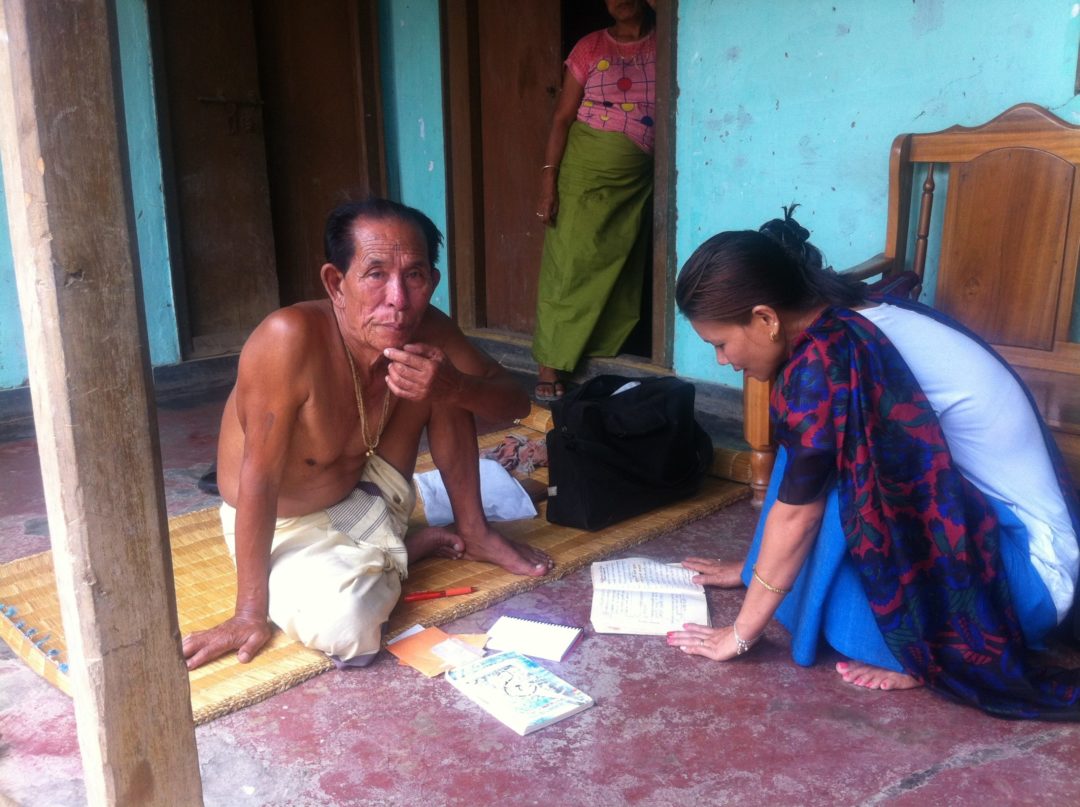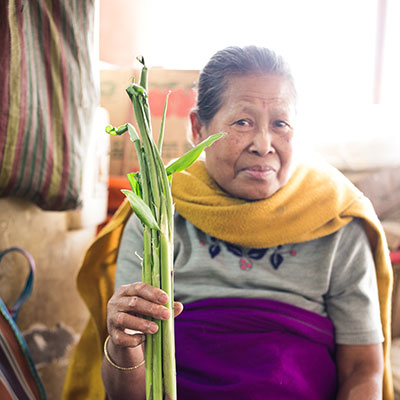ECONOMY AND BUSINESS
Cottage industries such as handicrafts, weaving and handloom products, fisheries, silk farming and, increasingly, tourism also have an important role to play in the Manipur economy.
Khwairamband Bazaar, also known as the Ima Bazaar or Nupi Keithel (literally Mother’s Market) is the main market in Imphal. Owned and operated exclusively by local women, Ima Bazaar has been the focal point of the Manipur Valley community since the sixteenth century. It is one of the largest markets run by women in the world. As well as handloom and handicraft products, all kinds of foods such as wild and farmed vegetables, fermented dried fish (ngari), and other local delicacies are sold here.
AGRICULTURE
The economy of Manipur is predominantly agricultural. More than half of the state’s total working population is directly engaged in agricultural work.
Manipur produces considerable quantities of rice, wheat, maize, pulses, sugarcane and oilseeds such as mustard, groundnut, soybean and sunflower. Other important crops include a variety of fruits, vegetables, spices, roots and tuber, and a plethora of aromatic and medicinal plants and herbs.
TOURISM
Manipur’s relative isolation and unparalleled natural beauty coupled with its extraordinary history, culture and traditions frame this “jewelled land” as a place of mystery and wonder for even the most seasoned international traveller.
The state boasts incredible flora and fauna and numerous exotic locations: Loktak Lake is one of the biggest freshwater expanses on the subcontinent and the Keibul Lamjao National Park, the last natural habitat of the rare Sangai ‘dancing’ deer, is the only floating national park in the world.
Manipur is a relative newcomer to the tourist industry. It is working to develop niche areas such as eco-tourism, adventure tourism and medical tourism while conserving and protecting Manipur’s rich heritage, natural environment and biodiversity.
MEDICINAL PLANTS
Identified as one of only two biodiversity ‘hotspots’ in the entire subcontinent, northeast India and Manipur in particular are endowed with vast bio-resources, supporting more than 50 percent of India’s entire biodiversity.
However, many of the plants have not been recorded. Their properties and usage have been handed down informally by the indigenous medical practioners of Maibarol, the Manipuri traditional medical system, making it crucial to begin to properly preserve the knowledge about these rare plants and the plants themselves.
BONE AND BODY CLINIC AND TRAINING CENTRE, MANIPUR
BONE AND BODY CLINIC AND TRAINING CENTRE, MANIPUR
IMA TALES
“The worth of a civilization can be judged by the place given to women in the society" K.S. Bhalla
The women (or Ima) of Manipur play a central role in the social, cultural and political life of local communities. In ‘Ima Tales’ we will share some of the Manipuri women’s homegrown wisdom, bringing you stories about the traditional remedies, recipes and other indigenous practices that make Manipur such a distinctive place. Click here to find out more…
SUPPORT OUR WORK
DONATE
Make a one-time donation or sign-up to donate an amount each month. You can choose to support the new Manipur centre or help the entire organisation and the work we do.
GET INVOLVED
We rely on people like you to help make the BBRC’s work a success. There are lots of ways you can get involved and support us.



